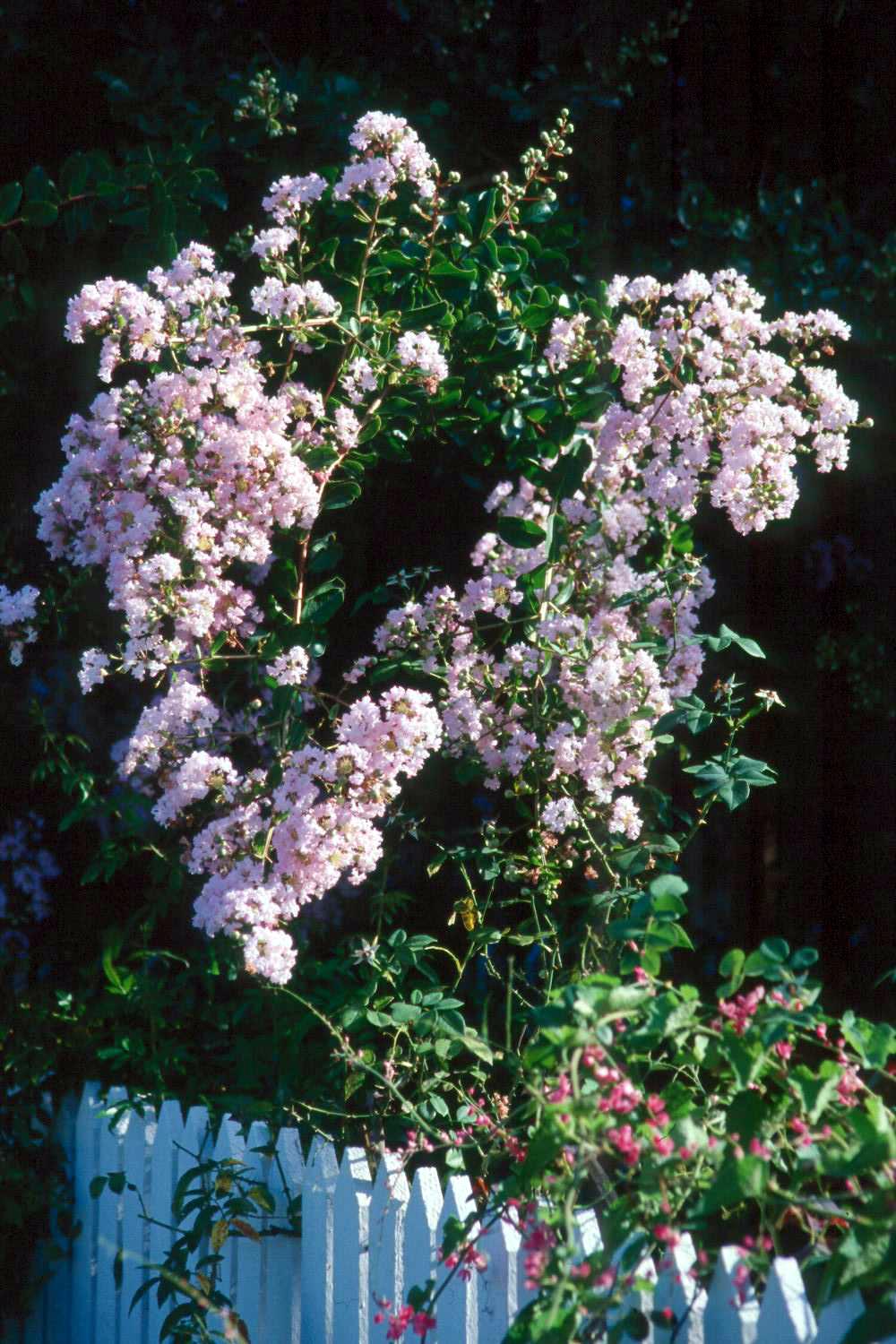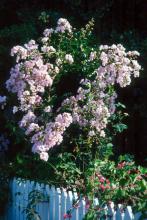Information Possibly Outdated
The information presented on this page was originally released on June 18, 2001. It may not be outdated, but please search our site for more current information. If you plan to quote or reference this information in a publication, please check with the Extension specialist or author before proceeding.
Crape myrtles rank high for summer color
By Norman Winter
MSU Horticulturist
Central Mississippi Research & Extension Center
Crape myrtles are starting to bloom all over the South, and it's not hard to see why they are the most popular summer flowering tree. Many gardeners mistakenly think they are native to this area, but Europeans discovered the Southeast Asia natives around 1750 and early settlers brought them to this country.
The crape myrtle is widely planted throughout the South because it flowers during the hot summer months when little else is in flower. One of my favorite horticulturists has referred to them as the "Lilacs of the South."
For years the choice of variety for crape myrtle was by color, such as pink, lavender or red. Thanks to the work of the U.S. National Arboretum and Dr. Donald Egolf, that changed. In 1962 work began to breed crape myrtles that were resistant to powdery mildew.
The breeding program began by crossing Lagerstroemia indica with Lagerstroemia fauriei from Japan. The early hybrids were then backcrossed with the L. indica to obtain larger, more impressive blooms.
The work paid off immensely and today we have a number of outstanding varieties available. Many of the varieties hybridized by the arboretum were given the names of Native American tribes.
The South Mississippi Branch Experiment Station in Poplarville has played an important role in the evaluation process with the U.S. National Arboretum. This work lead to three crape myrtles being chosen as Mississippi Medallion winners over the past five years. These were Natchez, Tonto and Sioux.
The next few weeks will be the time to look for bargains on crape myrtles as well as to see them blooming at the nursery. This allows you to choose the color needed for the landscape. I prefer those varieties that make it easy for me to do a deadhead-type pruning after the first set of flowers has finished, thereby promoting new growth and another round of blossoms.
In other words, tall selections, though beautiful, are harder to prune. Some of my favorites that are shorter in stature are Zuni (dark lavender and 9 feet), Hopi (medium pink and 7 feet), Acoma (white and 10 feet), Tonto (Fuchsia-red, 8 feet and a Mississippi Medallion winner), and Pecos (medium pink and 8 feet).
There are a couple of non-Indian types that also have caught my eye for beauty and the fact that they appear not to be plagued by disease. The first is Catawba that is 10 feet in height, is covered by dark purple blossoms and has shown good disease resistance.
The second is Near East and it has to be one of the most beautiful crape myrtles in the world. It has been reported to reach more than 16 feet tall. The ones I have been watching are staying shorter. Regardless, the branches bend over to allow for easy dead heading. The light pink blossoms are borne on huge panicles, giving this crape myrtle extra high marks for elegance.
After planting, it is important build a saucer or ring around the tree so that it will hold water. This ring can be removed the second year. Then apply a good layer (4 to 5 inches) of mulch like pine bark or pine straw. Watch your moisture during the first year. Supplemental water may be needed to get them established.
I have noticed area crape myrtles being hit hard by powdery mildew. If you love this summer blooming tree but don't want to start a fungicidal program, consider planting some of the newer disease-resistant varieties. These are fast growing trees, and getting rid of those plagued by disease may be easier and more quickly rewarding than you think.








